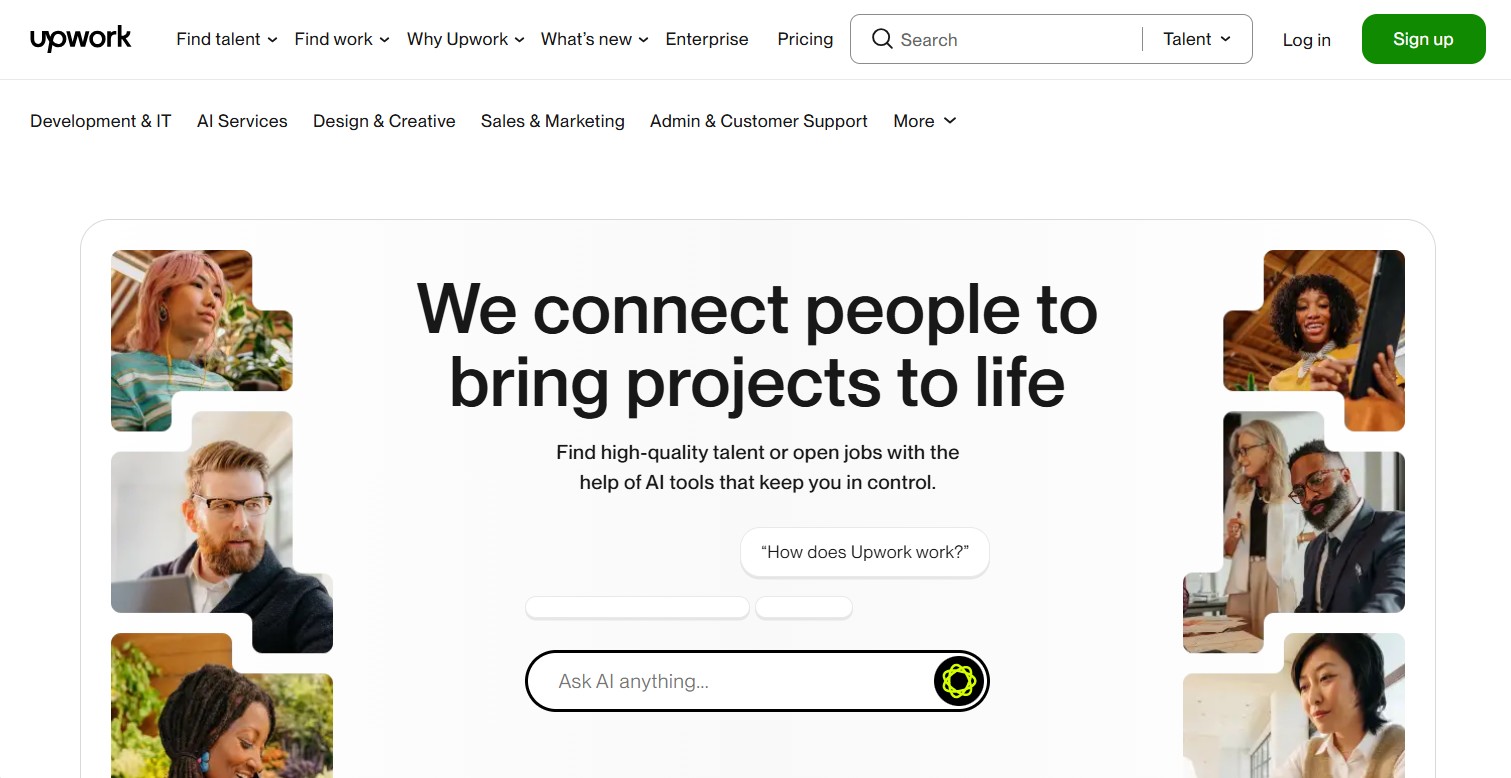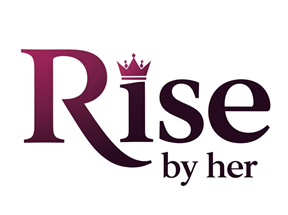In 2025, the tech industry continues to thrive, with no signs of slowing down. From artificial intelligence and cloud computing to cybersecurity and data science, careers in information technology (IT) are some of the most future-proof and high-paying options available. And for women with a STEM background, this field offers a powerful opportunity to make a real impact.
So, why should women in STEM consider IT careers in 2025?
For starters, IT is one of the most inclusive fields when it comes to transferable skills. Whether your background is in biology, engineering, physics, or math, there’s likely a tech role that fits your strengths, from data analytics and UX design to software development and IT project management. The industry also welcomes diverse work styles, with many roles offering remote flexibility, contract freedom, and global opportunities. At the same time, the gender gap in tech is still real, women are underrepresented in leadership positions, and biases persist in hiring and promotions. But here’s the flip side: that gap creates space. Space for innovation. Space for women to lead, build communities, and shape the future of technology on their own terms. And today, more than ever, support networks and women-focused organizations are stepping up to make that happen.
This guide will walk you through everything from choosing the right tech career path to getting support from organizations that champion women in tech. Whether you’re pivoting from another STEM field or just getting started, this is your roadmap to a thriving career in IT, built with women like you in mind.
Understanding the Different Paths in IT
If you’re a woman in STEM considering a shift to tech, you’re in luck, there’s no one-size-fits-all route into IT. The field is broad, dynamic, and full of options that align with different educational backgrounds and interests. From coding to cloud systems, the best IT career paths for women in STEM are as diverse as the women pursuing them.
Below are some of the most in-demand IT roles in 2025, along with how they align with different STEM strengths and what you’ll need to succeed.
Top IT Career Paths and How They Align with STEM Fields
| Role | Ideal for Backgrounds In | Core Skills Needed (2025) | Average Salary (US, 2025) |
| Software Developer | Math, Physics, Engineering | Python, JavaScript, Git, APIs, Agile development | $105,000+ |
| Data Analyst / Scientist | Math, Statistics, Biology | SQL, Python, R, Tableau, machine learning basics | $95,000–$120,000 |
| Cybersecurity Specialist | Engineering, Computer Science | Network security, risk assessment, SOC tools, CompTIA | $110,000+ |
| Cloud Engineer | Physics, Engineering, IT | AWS, Azure, Kubernetes, Docker, scripting (Bash/Python) | $115,000+ |
| UX/UI Designer | Psychology, Human Factors, Design | Figma, Adobe XD, user testing, HTML/CSS basics | $90,000+ |
| IT Project Manager | Any STEM + leadership interest | Agile/Scrum, budgeting, stakeholder communication | $100,000+ |
Quick Guide: Match Your STEM Background to an IT Path
- Math or Stats? Data science, machine learning, and software development may be your sweet spot.
- Engineering? Cybersecurity, cloud engineering, and DevOps roles align well.
- Biology or Environmental Science? Data analysis and bioinformatics offer tech-based paths forward.
- Psychology or Design Interest? UX/UI design lets you combine creativity and science.
- Natural leadership skills? Project management or product ownership roles could be a great fit.

No matter what your STEM background, there’s an IT role that needs your unique perspective. The key is to identify where your current strengths meet the technical needs of today’s most in-demand positions. Once you know the path, you can start building the skills that will get you there.
Must-Have Skills to Succeed in IT
Breaking into IT doesn’t just require knowing how to code, it’s about mastering a blend of technical and soft skills that make you a well-rounded, job-ready professional. If you’re a woman in STEM exploring this path in 2025, focusing on the technical and soft skills women need for IT careers will give you a serious edge.
Technical Skills You Should Start Building
These are the core hard skills most IT roles will expect you to know, depending on your career path:
| Skill Area | Tools & Platforms to Learn (2025) | Free & Paid Resources |
| Coding Languages | Python, JavaScript, Java, HTML/CSS | Codecademy, freeCodeCamp, Coursera, Udemy |
| Data Skills | SQL, Excel, Python (Pandas), Power BI, Tableau | DataCamp, edX, Google Data Analytics (free cert) |
| Cloud Platforms | AWS, Microsoft Azure, Google Cloud Platform | AWS Skill Builder, Microsoft Learn, A Cloud Guru |
| Cybersecurity | CompTIA Security+, ethical hacking tools | Cybrary, TryHackMe, Coursera Cybersecurity courses |
| DevOps Tools | Git, Docker, Jenkins, Kubernetes | GitHub Learning Lab, Linux Foundation, Pluralsight |
Soft Skills That Set You Apart
Women in tech often thrive when they bring more than just tech talent to the table. These soft skills are just as critical as your certifications:
- Communication: Explaining technical ideas to non-technical stakeholders clearly and confidently.
- Problem-Solving: Breaking down complex challenges, especially under pressure.
- Collaboration: Working across teams, managing projects, and sharing credit.
- Adaptability: Tech changes fast, you need to stay curious and open to learning.
- Confidence: You belong in the room. Don’t underestimate the power of speaking up.
Your Action Plan
- Choose 1-2 technical skills to focus on based on your career path.
- Enroll in a free or low-cost course to build confidence and experience.
- Practice soft skills by joining women-in-tech groups, hackathons, or open-source communities.
With the right mix of tools and traits, you’re not just entering IT, you’re entering ready to lead.
Education & Certifications That Matter in 2025
If you’re wondering whether you need a computer science degree to start a tech career in 2025, the answer is: not necessarily. Today, there are multiple learning paths, and more employers are open to certifications, bootcamps, and self-taught skills, as long as you can prove your knowledge.
Here’s how to navigate your education options and choose the top certifications for starting a tech career in 2025.
Your Path, Your Choice: Degrees vs. Bootcamps vs. Self-Taught
| Path | Pros | Cons | Best For |
| Traditional Degree | Strong foundation, recognized globally, access to internships | Expensive, 3-4 years commitment | Women early in their STEM journey |
| Bootcamps | Fast-track (8–24 weeks), project-based learning, job placement help | Can be intense, variable quality | Career switchers or fast learners |
| Self-Taught | Flexible, low-cost, build your own portfolio | Requires discipline, limited structure | Highly motivated independent learners |
Top Certifications to Kickstart Your Tech Career (2025 Edition)
Certifications are a great way to validate your skills, especially if you’re just starting out or transitioning into IT from another field. In 2025, several well-respected entry-level certifications can help open doors to high-demand tech roles. Each certification aligns with specific career paths, so you can choose the one that best suits your goals and interests.
Here are some of the most recognized certifications to help you get started:
- Google IT Support Professional Certificate: Offered by Google through Coursera, this program is designed for complete beginners. It’s ideal for those interested in IT support, helpdesk roles, or starting a general IT career. The course includes hands-on labs and is often eligible for financial aid.
- AWS Certified Cloud Practitioner: Provided by Amazon Web Services, this is a great entry point for anyone interested in cloud computing, DevOps, or cloud architecture. It’s beginner-friendly and helps you understand core AWS services and cloud concepts.
- CompTIA A+, Network+, and Security+: These foundational certifications from CompTIA are respected across the industry.
- A+ is great for IT support and general hardware/software troubleshooting.
- Network+ focuses on networking concepts.
- Security+ is ideal for beginners in cybersecurity.
- Microsoft Azure Fundamentals (AZ-900): If you’re interested in cloud-based roles, especially those involving Microsoft platforms, this certification is a solid starting point. It introduces key concepts in cloud computing, Azure services, pricing, and support.
- Cisco Certified Network Associate (CCNA): Perfect for those pursuing careers in networking, infrastructure, or system administration. It covers networking fundamentals, IP services, security basics, and automation.
- Certified ScrumMaster (CSM): This certification by Scrum Alliance is ideal for those interested in agile project management, tech team leadership, or roles that involve coordinating software development processes.
Explore More Certifications: Top Certifications Every Woman in STEM Should Have in 2025
How to Gain Experience Without a Tech Job Yet
Breaking into tech without a formal job may feel daunting, but it’s totally doable—and many women in STEM are doing it successfully. In 2025, employers care just as much about real-world projects and problem-solving ability as they do about your job history. The key is to start doing, not just studying.
Here’s how you can gain hands-on experience and build credibility before landing your first IT job:
Build a Portfolio That Shows What You Can Do
Create a portfolio that reflects your technical strengths, creative thinking, and problem-solving skills. Use platforms like:
- GitHub: Share code repositories, contribute to open-source, and document your work.
- Personal Website: Create a simple site to showcase your projects, resume, certifications, and links to your LinkedIn or GitHub.
Freelance Your Way into Experience
Freelancing is a great way to get paid and gain valuable experience—even part-time.
- Upwork: Great for entry-level tech gigs like WordPress setup, basic coding, or tech support.
- Fiverr: Offer microservices like bug fixing, script writing, or tech documentation.
- Toptal (Advanced): For more experienced freelancers, Toptal offers vetted clients and premium projects.

Contribute to Open-Source Projects
Open-source contributions are like collaborative internships. You work with real teams, solve real issues, and get visibility in the tech community.
- GitHub Explore: Use filters to find beginner-friendly open-source projects labeled “good first issue.”
- First Timers Only: A welcoming resource for beginners looking to make their first contribution.
Volunteer Your Skills for a Cause
Volunteer tech work helps you gain experience and support meaningful causes. You’ll build both your resume and your network.
- VolunteerMatch.org: Search for tech-related volunteer opportunities in web development, data entry, digital literacy, and more.
- Catchafire.org: Focuses on skills-based volunteering with nonprofits needing IT help.
- TechSoup: Find projects and training resources tailored to nonprofit tech.
Internships, Apprenticeships, and Virtual Work
Even unpaid or part-time internships can open doors.
- Look for remote internships via platforms like Internshala or Chegg Internships.
- Apply for tech apprenticeships at companies like IBM, Google, or Accenture.
- Consider virtual work experiences offered by Forage, which simulate real work tasks from top companies.
Networking Tips for Women Breaking into Tech
Your skills matter, but your network can open doors. For women in STEM entering tech, building genuine connections helps you find jobs, mentors, and support.
Join Women-Focused Tech Communities
These are great spaces to meet peers, mentors, and employers:
- Women Who Code: Global network offering events, job boards, and peer support.
- TechLadies: Especially active in Asia, with job matching and coding programs.
- Elpha: A women-led community with career advice and job posts.
- LinkedIn Groups: Try searching for niche groups like “Black Women in Tech” or “Women in AI.”
Attend Events-Online or Locally
Virtual and in-person events are great for learning and making real connections.
- Top virtual picks: Grace Hopper Celebration, Women Tech Global, She+ Geeks Out.
- Local options: Use Meetup.com or LinkedIn to find women-in-tech meetups near you.
Finding Your First Job in IT
Landing your first IT job can feel overwhelming, but with the right tools and strategy, it’s 100% possible. Whether you’re fresh out of school, switching careers, or returning to work, you can break into tech with confidence.
Here’s how to land your first IT job as a woman in STEM:
Optimize Your LinkedIn Profile for Recruiters
Your LinkedIn is your digital resume. Make sure it’s clear, polished, and search-optimized:
- Headline: Use keywords like “Aspiring Data Analyst | STEM Background | Open to Tech Roles”
- Summary: Share your story, why you’re entering IT, your skills, and what excites you.
- Skills section: Add specific tech tools (Python, AWS, Excel, etc.).
- Open to work: Turn on the “Open to Work” feature for recruiters.
Build a Targeted Tech Resume
Your resume should highlight both your technical skills and your transferable strengths from STEM.
Keep it to one page and include:
- A clear summary (what role you want + key strengths)
- Technical skills (languages, platforms, tools)
- Projects or internships (link to GitHub or portfolio)
- Education, bootcamps, and certifications
Prepare for Interviews Like a Pro
Nail your interviews by focusing on three things:
- Technical questions: Review common role-specific questions (e.g., “What is a REST API?”).
- Behavioral questions: Use the STAR method (Situation, Task, Action, Result).
- Confidence boosters: Practice speaking about your projects and background, even if they’re not from a formal tech role.
Use Women-Friendly Job Boards
Apply to companies that value inclusion and offer supportive environments:
- PowerToFly: Remote jobs at women-inclusive companies.
- Elpha: Career platform built by and for women in tech.
- Tech Ladies: Job board + private Slack group with direct hiring access.
Job-Hunting & Application Tracker Checklist
Here’s a simple checklist to keep your job search organized:
- Update LinkedIn and resume
- Build/refresh your online portfolio or GitHub
- Set a weekly application goal (e.g., 10 jobs/week)
- Use a spreadsheet to track job title, company, date applied, follow-up
- Practice 2-3 mock interviews
- Follow up on each application after 7-10 days
Your first tech job might not be perfect, but it’s your foot in the door. With each resume, interview, and connection, you’re one step closer to making your mark in IT.
Conclusion: Your 2025 Action Plan for Starting a Career in IT
If you’ve made it this far, you already have what it takes to start your career in tech. Let’s quickly recap your step-by-step IT career guide as a woman in STEM in 2025:
- Explore IT Roles: Learn which tech paths align with your interests and STEM background. Whether it’s software development, data analytics, cybersecurity, or UX, there’s a place for you in IT.
- Gain Technical & Soft Skills: Master the must-have tools and languages, and don’t forget the power of communication, problem-solving, and collaboration.
- Choose the Right Education Path: Compare degrees, bootcamps, and self-taught routes. Pick the one that fits your learning style and goals. Certifications like Google IT Support and AWS Cloud Practitioner can open doors fast.
- Build a Portfolio: Showcase your projects, code, and creativity on GitHub or a personal website, even before landing your first job.
- Network with Purpose: Connect with supportive tech communities like Women Who Code, TechLadies, or Elpha. A strong network will lift you up and plug you into opportunities.
- Apply with Confidence: Polish your resume, prep for interviews, and track your job search. Use women-focused job boards that value inclusion and growth.


